Shallow and Deep Water Habitat for the Summer Months
After the spawn, females transition back out from their spawning flats to recuperate in deeper staging areas while males remain shallow to guard the fry. As water temperatures get warmer going into summer fish face two choices: move/remain in deeper areas with cooler water while adequate dissolved oxygen concentrations are available, or to move/stay in the warming shallow water where vegetation and surface diffusion can replenish oxygen quicker. Not all the fish in your pond or lake will choose the same option so it is important to cater to the needs of both.
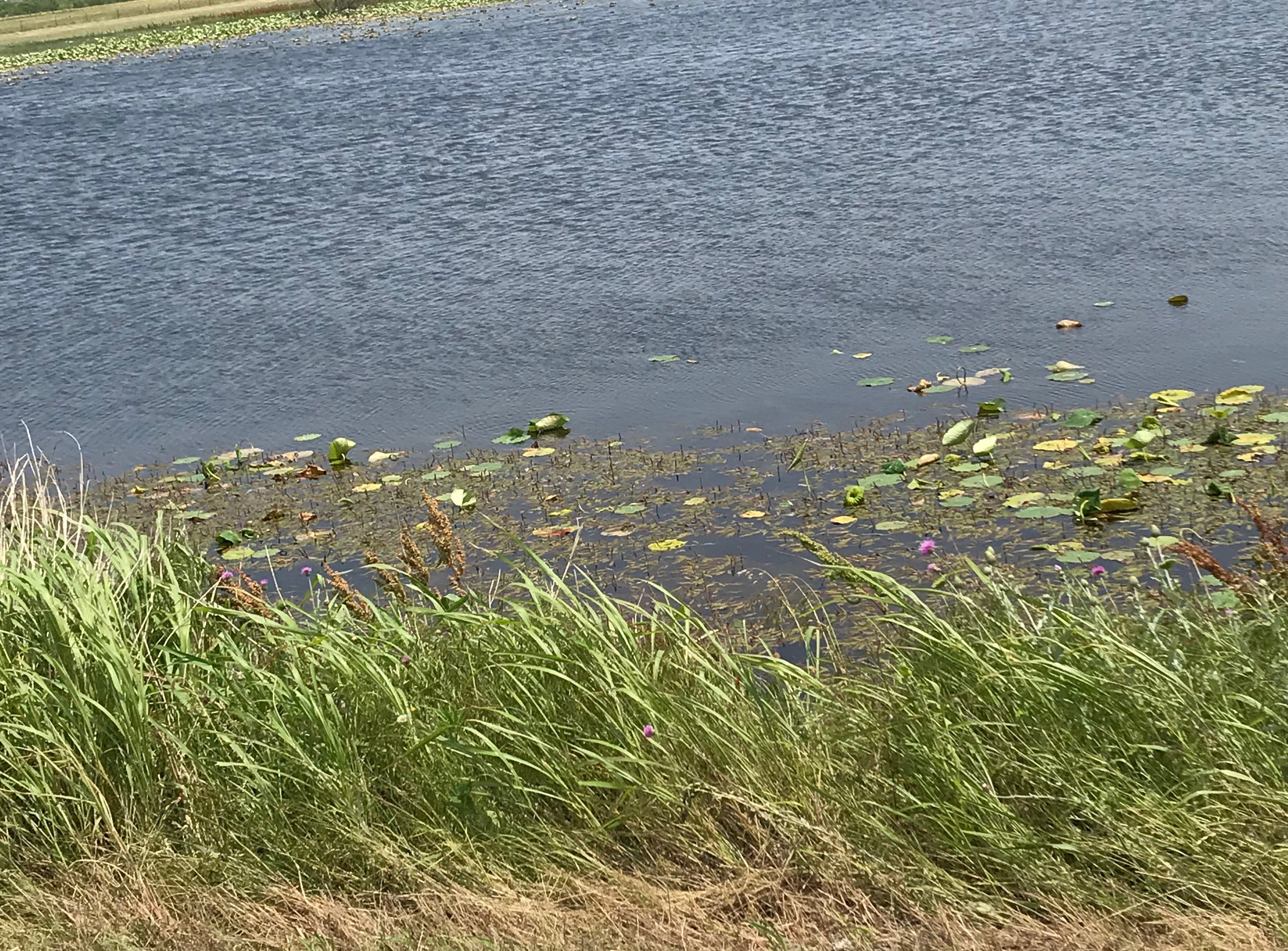 Natural vegetation and wind are crucial to the health of fish in the shallow waters. It is a delicate balance to manage submergent vegetation so that there are adequate amounts for oxygen production through photosynthesis throughout the day, but not so much that it then chokes out the surface and inhibits the diffusion of atmospheric oxygen into the water. The wind is important because it creates surface agitation, which increases the surface area where diffusion can occur, resulting in increased oxygen concentrations. Combining submergent vegetation growth in portions of the lake that get consistent wind agitation will help combat environmental stressors such as lower dissolved oxygen concentrations associated with increased water temperatures. You should also create some hard structures/cover to create ambush locations consistent with the feeding style of largemouth bass (pictured at top).
Natural vegetation and wind are crucial to the health of fish in the shallow waters. It is a delicate balance to manage submergent vegetation so that there are adequate amounts for oxygen production through photosynthesis throughout the day, but not so much that it then chokes out the surface and inhibits the diffusion of atmospheric oxygen into the water. The wind is important because it creates surface agitation, which increases the surface area where diffusion can occur, resulting in increased oxygen concentrations. Combining submergent vegetation growth in portions of the lake that get consistent wind agitation will help combat environmental stressors such as lower dissolved oxygen concentrations associated with increased water temperatures. You should also create some hard structures/cover to create ambush locations consistent with the feeding style of largemouth bass (pictured at top).
Fish that choose to go deep in the summer often gather near the metalimnion or thermocline. The thermocline, or metalimnion, is the middle layer of a stratified lake where water temperature decreases more rapidly with depth than the layers above and below. The thermocline is the buffer zone between the hot epilimnion (surface) and the lake's cold hypolimnion (bottom) layers. As the water warms, its ability to support the oxygen concentration (mg/L) decreases. The cooler water found in and near the metalimnion/thermocline can support a higher oxygen concentration (mg/L) and offers a less stressful environment for fish. It is also known to support a greater density of zooplankton during the day, which is a main food source for many prey species.
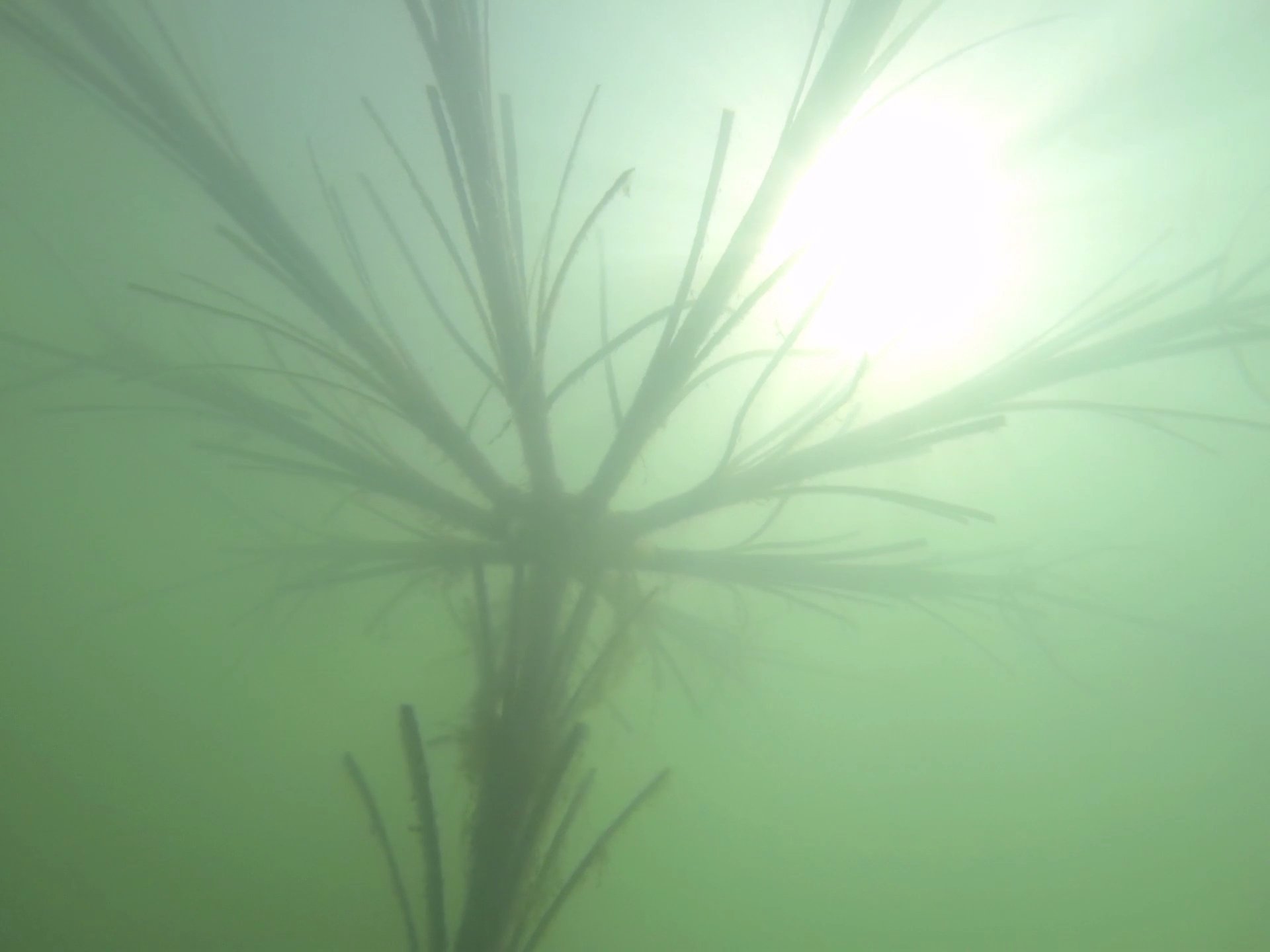 The thermocline can form at various depths depending on the lake or pond and fluctuates throughout the season and year to year. Having habitat that extends to different depths is vital because it allows the bass to maintain ambush locations to feed throughout the stressful summer months successfully. Large brush or rock piles that extend to a variety of different depths or artificial habitats such as the Honey Hole Tower that is specifically designed to provide deep water habitat are great options summer cover.
The thermocline can form at various depths depending on the lake or pond and fluctuates throughout the season and year to year. Having habitat that extends to different depths is vital because it allows the bass to maintain ambush locations to feed throughout the stressful summer months successfully. Large brush or rock piles that extend to a variety of different depths or artificial habitats such as the Honey Hole Tower that is specifically designed to provide deep water habitat are great options summer cover.
Nutrients are often depleted from the metalimnion because of stratification and lack of mixing between layers of water. The depletion rate of these nutrients depends on factors such as the size of the water body, biomass of aquatic organisms, and rate of nutrient loading, to name a few. The depletion of nutrients is a natural occurrence in any waterbody and is the first step towards the fall transition as baitfish push shallow for greater nutrient availability.
Fall Fish Habitat Needs
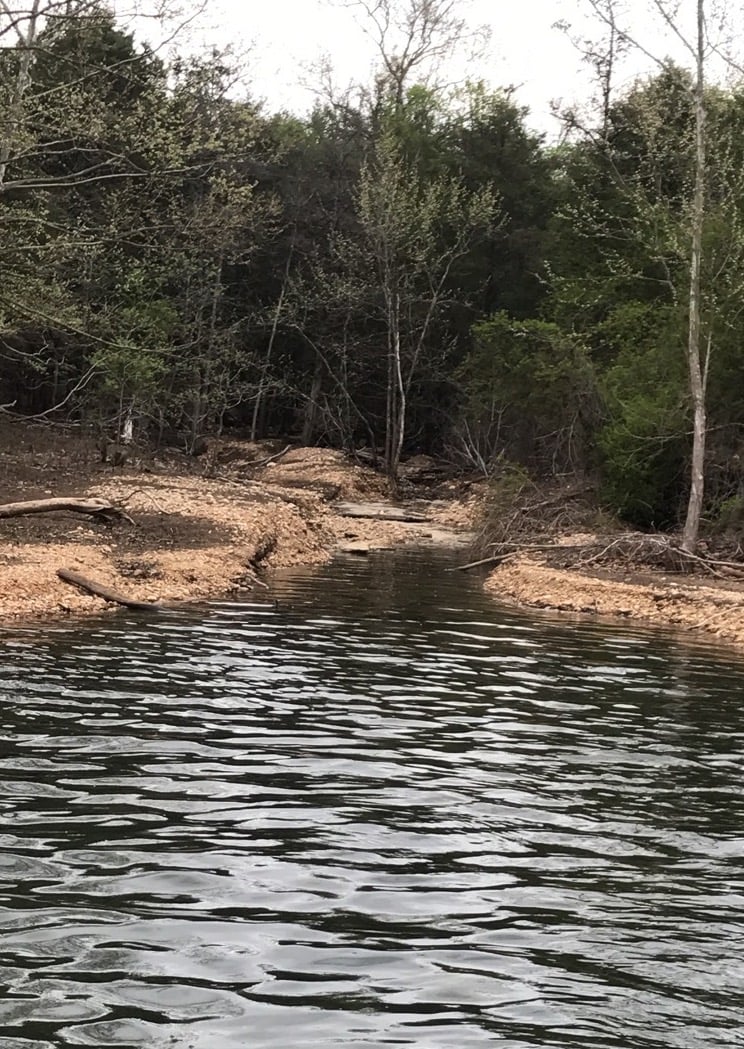 Bass typically utilize the same types of habitats twice per year. You see this in the summer to fall transition as bass begin to move back to shallow waters, pushing baitfish into pockets and creeks they may have spawned earlier that year. In the fall, I suggest creating habitat that the bass can use as they are in between their summer and spring habitats. Placing habitat on the deeper outside edge of spawning habitats allows your bass to ambush forage species as they are moving shallower and as they are trying to pull back out to open water in late fall. A row of trees or a congregation of shrubs are both valid forms of fall habitats.
Bass typically utilize the same types of habitats twice per year. You see this in the summer to fall transition as bass begin to move back to shallow waters, pushing baitfish into pockets and creeks they may have spawned earlier that year. In the fall, I suggest creating habitat that the bass can use as they are in between their summer and spring habitats. Placing habitat on the deeper outside edge of spawning habitats allows your bass to ambush forage species as they are moving shallower and as they are trying to pull back out to open water in late fall. A row of trees or a congregation of shrubs are both valid forms of fall habitats.
Best Fish Habitat for Winter
-1.png?width=300&name=Steep%20Rock%20bank%20for%20winter%20bass%20(1)-1.png) In winter, bass and their forage species often pull back out to areas they utilized in the summer. Unlike the summer, when the fish pulled out deeper to find cooler water, in the winter, fish inhabit the deeper water because it is slightly warmer and a more constant temperature than the surface water. Bass will utilize the same deep habitats they did in the summer for the majority of the winter, so there is no need to create more habitat. Often, in shallow lakes, it is common for bass to pull up shallow on mudflats, rocks, and dock floats where the water is being warmed quicker by the sun.
In winter, bass and their forage species often pull back out to areas they utilized in the summer. Unlike the summer, when the fish pulled out deeper to find cooler water, in the winter, fish inhabit the deeper water because it is slightly warmer and a more constant temperature than the surface water. Bass will utilize the same deep habitats they did in the summer for the majority of the winter, so there is no need to create more habitat. Often, in shallow lakes, it is common for bass to pull up shallow on mudflats, rocks, and dock floats where the water is being warmed quicker by the sun.
Pond King has designed a complete array of artificial habitat to provide cover for fish throughout the year. If you have any questions, or want help developing a multi-season habitat installation plan, please don't hesitate to contact us.
See y'all down at the pond!


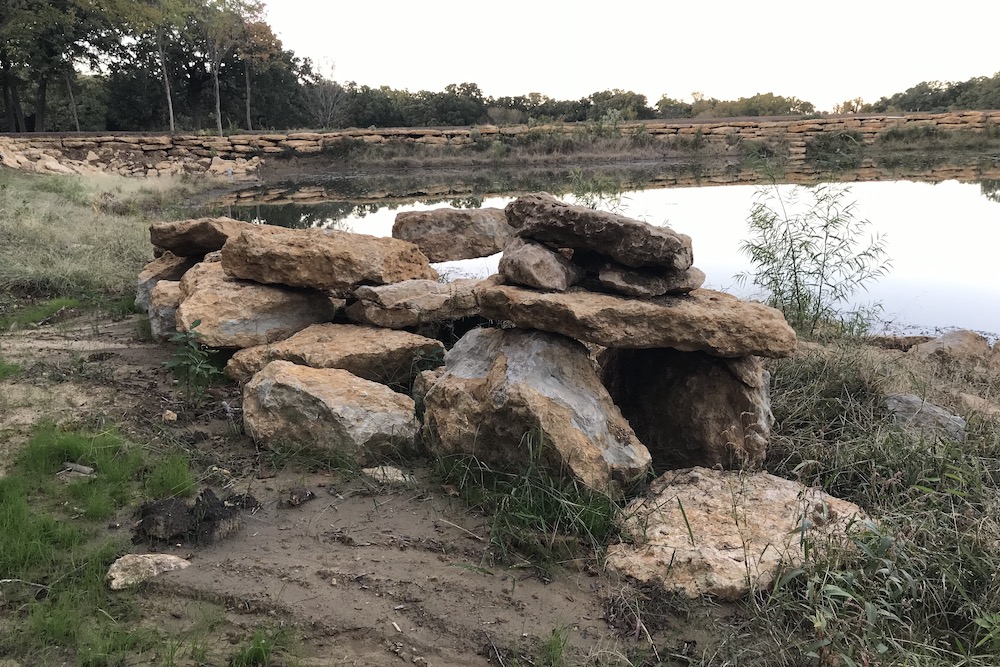
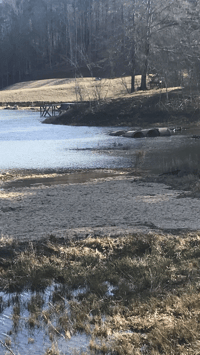 During the spring, as water begins to warm, bass start to move shallow to spawn. Bass spawn in high shallow pockets and flats that are protected from high winds. Bass utilize the hard substrate portions of these locations to make spawning beds. The hard substrate can be any of pea gravel, rock, sand, or streambed. The depth at which bass spawn is variable from lake to lake, but as a rule of thumb in most situations, 2-4 feet deep is the norm in North Texas.
During the spring, as water begins to warm, bass start to move shallow to spawn. Bass spawn in high shallow pockets and flats that are protected from high winds. Bass utilize the hard substrate portions of these locations to make spawning beds. The hard substrate can be any of pea gravel, rock, sand, or streambed. The depth at which bass spawn is variable from lake to lake, but as a rule of thumb in most situations, 2-4 feet deep is the norm in North Texas. 

